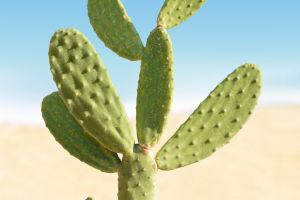In recent years, bananas have emerged in the fruit world and are very popular among the public. Bananas are rich in vitamins and can replenish various trace elements required by the human body.
In addition, it also has the effect of treating constipation and appetite. Therefore, it is very promising to grow banana trees.
We often see many different kinds of bananas in supermarkets or fruit markets, and there are many kinds of bananas because of different cultivation methods and regions, so it will lead to a great difference in the taste of bananas.
Banana farmers should choose the corresponding banana varieties to plant according to their local climate so that they can get twice the result with half the effort and achieve high yield in the later management.
1. Temperature: Bananas have formed specific requirements for temperature under the long-term high temperature and humidity domestication of the terroir. Temperature has become an important ecological factor limiting the growth and development of bananas.
Bananas can be grown in areas where the temperature is 15.5~35℃, and the temperature of 24~32℃ is the most suitable. If the temperature exceeds 24℃ for a long time during the growth and development of bananas, the fertility period of bananas can be shortened and high yielding and high quality bananas can be obtained.
The orchard chosen for planting bananas also needs to have enough space, because the distance between planting banana plants should be kept relatively far, if too close banana trees grow up, they will block each other, resulting in the sunlight can not shine into the land, the temperature of the soil will be reduced, and the bananas will grow very slowly.
2.Moisture: Banana is a large herbaceous fruit tree, with loose pseudostem, juicy plant, high water content of all organs, plus wide leaves with strong transpiration, shallow root system with weak ability to use water, and wetness and avoid drought, so banana needs a lot of water during the growth and development period.
It is generally believed that the soil of banana plantation should always maintain proper moisture. From the viewpoint of annual water requirement of banana, the most ideal is the annual rainfall of 1800~2500mm and the rainfall should be evenly distributed, preferably 150~200mm of rain per month, and the minimum should not be less than 100mm of rain.
3. Requirements for wind: As the banana stem is thick, dry and brittle, the leaves are large and easy to fold, the roots are shallow and brittle, and the fruit spikes are long and heavy, it is easy to suffer from strong wind and typhoon.
When the wind speed exceeds 20 m/s, it can tear the banana leaves and break the petiole, which will affect the photosynthesis of banana and easily infect the leaf spot disease; it will shake the banana plant seriously and damage the root group; if the plant shakes too much during the flower bud differentiation, it will also cause yield reduction.
Strong typhoons have more impact and can blow down banana plants, break banana bodies, or even uproot the whole plant; if it coincides with the period of bud and flowering and fruit development, the loss will be even more serious.
4. Soil: Banana can be grown not only on flat land, but also on hills, terraces and uplands, so it can adapt to many types of soil. However, the roots of banana are aerobic fleshy roots.
And the young absorbing roots have weak penetration to the soil, coupled with the fast growth rate and large growth volume of banana, and the demand for fertilizer and water, so attention should be paid to the selection of good soil when building the garden.


